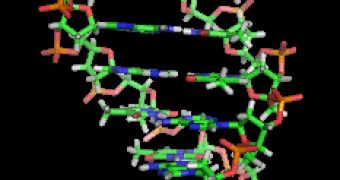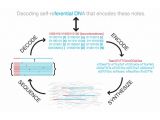Deciphering the code of life, the DNA, is something that geneticists have been trying to do for decades, but it so happens that certain specialists are looking to do different things with that compound.
Harvard has struck again, or at least two of its specialists have. A geneticist and a bioengineer have successfully turned a gram of DNA into a storage device with more memory than hundreds of today's best hard drive units put together.
A whole team of people is behind the milestone, but the two most important names are those of George Church, professor of genetics at Harvard Medical School, and Sri Kosuri, a senior scientist at the Wyss Institute.
In order to treat DNA like any storage device, they sequenced it and converted each of the TGAC bases into binary code.
At the beginning, each strand of DNA has a 19-bit address block, but a whole vat of DNA can be sequenced out of order, leaving it for later to be sorted into usable data based on those addresses.
The result is DNA shaped into strands that store 96 bits, with each TGAC representing either 1 (T and G) or 0 (A and C).
One gram of DNA has, so far, been proven capable of storing 700 terabytes of data (5.5 petabits), due to its incredibly high density (even though each base is just a few atoms large, it can store one bit of data anyway).
Density is just one of DNA's advantages though. A second asset is the type: volumetric (beaker) rather than planar (hard disk). Stability is the third aspect (DNA can survive for hundreds of thousands of years).
“You can drop it wherever you want, in the desert or your backyard, and it will be there 400,000 years later,” Church said.
We don't really need to go into too many details as to what this achievement means. Storing a whole data center's worth of information in a single gram speaks for itself (233 3 TB HDDs in a single drop of the substance).
We just hope that when the time does come for us to store, in four grams of our skin, all the digital data produced by humankind in one year (and, in so doing, essentially rendering it more secure than ever), there won't be any health hazards.
“The information density and scale compare favorably with other experimental storage methods from biology and physics,” said Sri Kosuri.
“Imagine that you had really cheap video recorders everywhere,” Church said. “Just paint walls with video recorders. And for the most part they just record and no one ever goes to them. But if something really good or really bad happens you want to go and scrape the wall and see what you got. So something that’s molecular is so much more energy efficient and compact that you can consider applications that were impossible before.”

 14 DAY TRIAL //
14 DAY TRIAL // 
